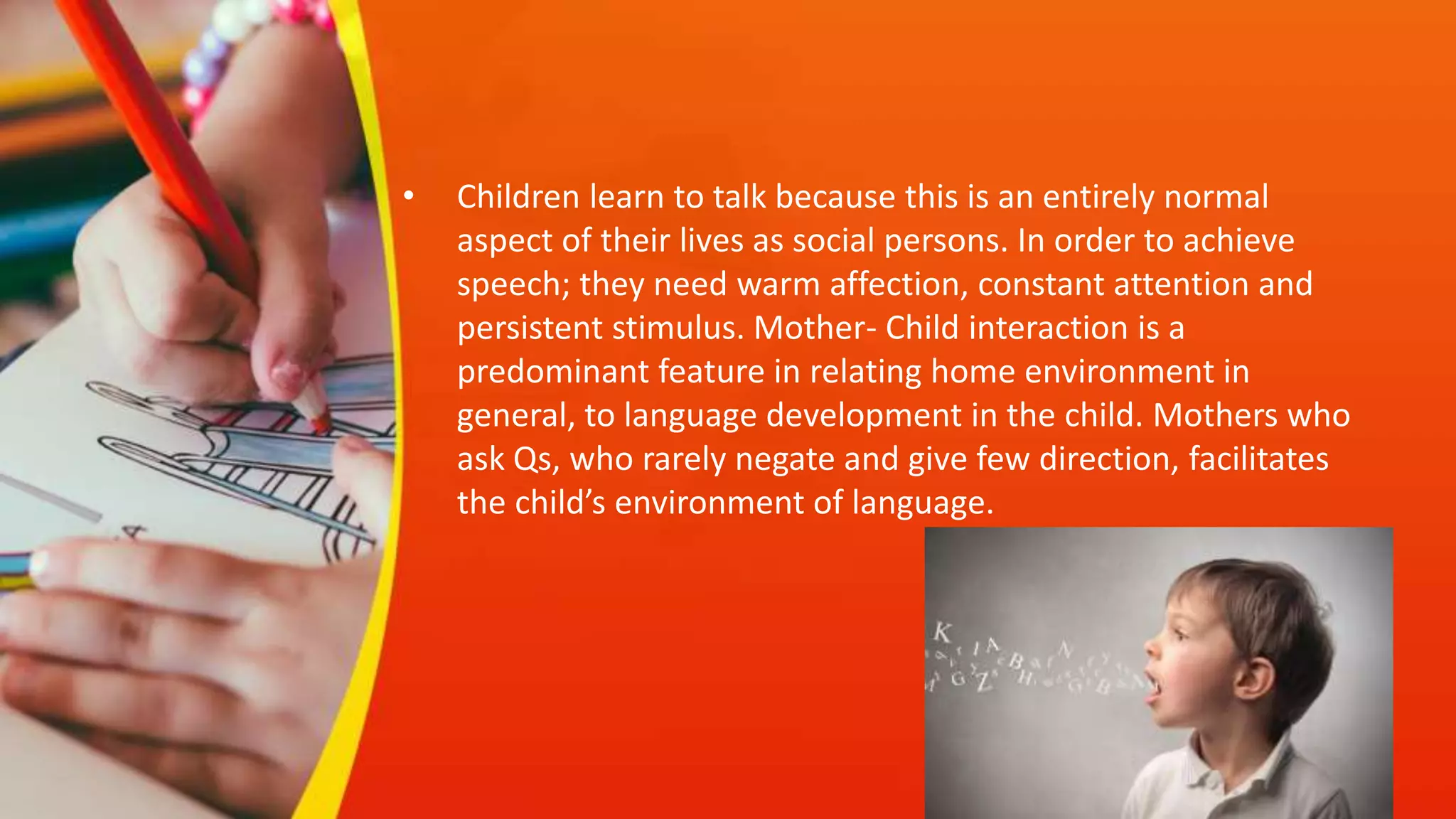The document discusses various techniques for speech and language stimulation in children, emphasizing the importance of mother-child interaction and different methods for encouraging language development. Techniques such as echoing, verbal imitation, modeling, and using commands are outlined, with examples demonstrating their application in everyday situations. These strategies aim to enhance children's communication skills, encouraging them to engage and express themselves effectively.





















